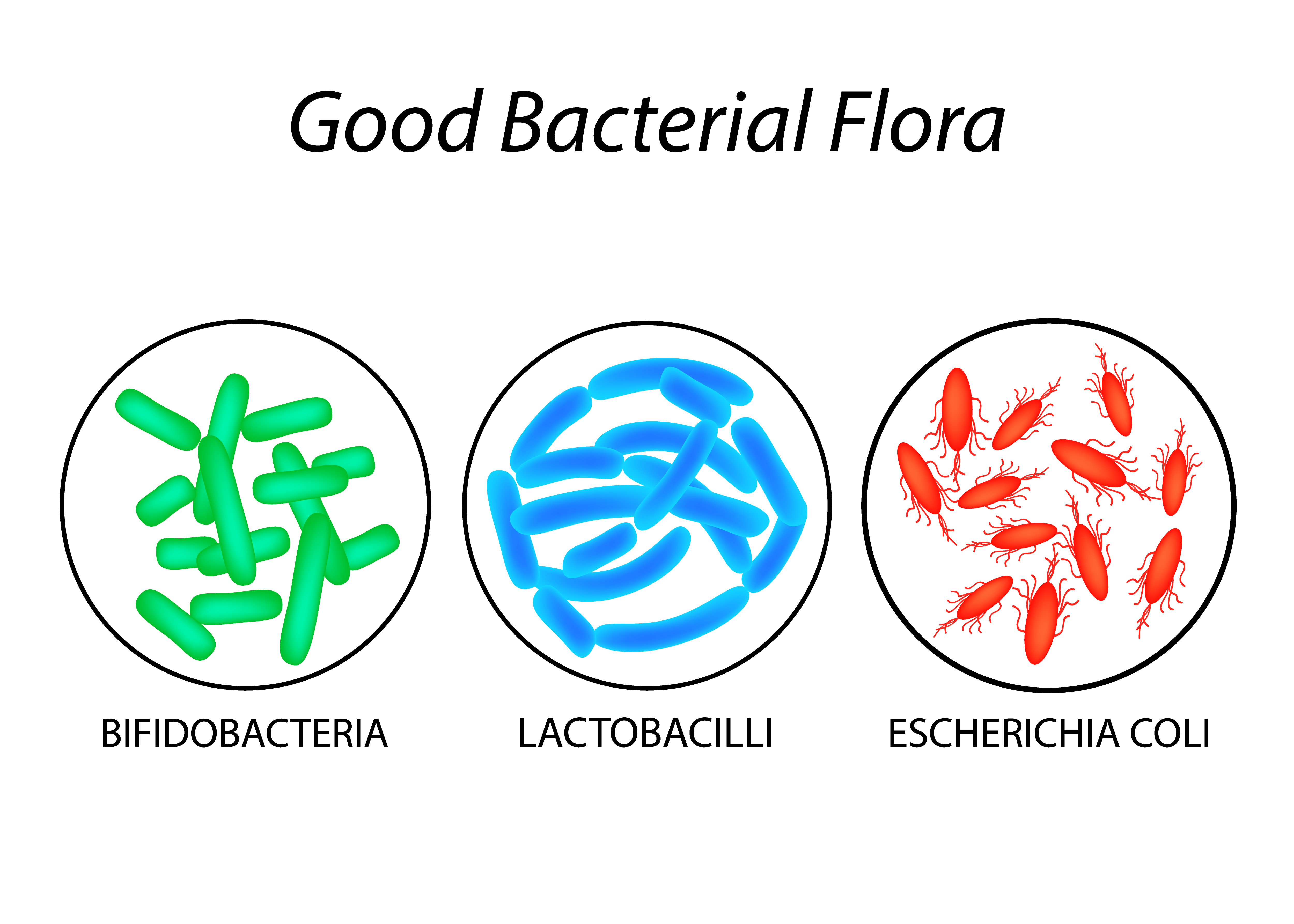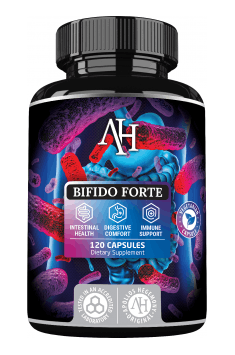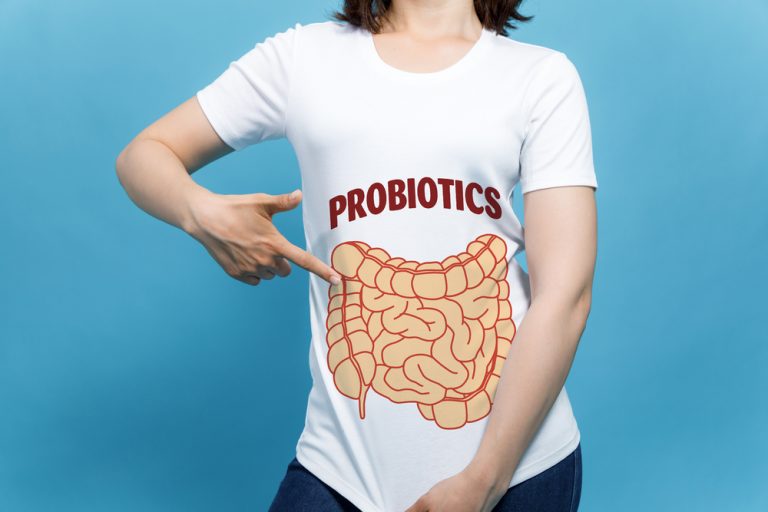Probiotics are valuable tools that help in balancing the bacteria found in our digestive system, especially in the gut. They are an extraordinary support during the treatment of many chronic diseases, help our body regain balance. It has been shown that intestinal bacteria can physically change the composition of our brain, affecting emotions and are associated with chronic illnesses such as Myalgic Encefalomyelitis/Chronic Fatigue Syndrome (ME /CFS) or the Chronic Fatigue Syndrome. This systemic combination of intestinal bacteria and actually all of our health has prompted many people to use probiotic supplements. This article discusses some important issues that should be rethought before deciding which probiotics to use in order to benefit 100% of the potential they offer and which products to avoid when you are suffering, for example, from histamine intolerances.
- D-Lactic Acid versus L-Lactic Acid (D-lactic acid and L-lactic acid)
- Intolerance of histamine
- What is the connection with bacteria?
- Study of probiotic bacteria
- "Good" bacteria
- Oligosaccharides and inulin fibers
- Fruit and vegetables with high fiber content
- Food intolerance and probiotics
- What probiotic should a person with a sensitive digestive tract reach?
- Summary
- Bibliography
D-Lactic Acid versus L-Lactic Acid (D-lactic acid and L-lactic acid)
Lactic acid is a compound that is produced naturally by the human body and is used in many processes, such as energy production. This compound occurs naturally in one of two isomeric forms; D-lactic acid or L-lactic acid.Both of these types are found in the human body, but only L-lactic acid is naturally produced by the body. D-lactic acid is produced by many different types of bacteria and is considered to be an accurate biomarker for measuring excessive bacterial growth. Much of the data on bacteria and the lactic acid they produce comes from the study of food concerns over food preservation. For example, eggs are considered to be old / unfit for consumption when 200 mg / kg of L-lactic acid is observed (2). Such studies emphasize that bacteria are commonly known from the production of lactic acid, and consequently - measurements of lactic acid may indicate their quantity.
Measurement of the ratio between types of lactic acid is also a useful indicator suggesting pathogenic bacterial overgrowth. For example, patients with chronic fatigue syndrome have been found to have higher D-lactic acid levels in blood. Recent studies have even shown that ME / CFS can be accurately predicted in 82% of cases by analyzing faecal bacteria and biomarkers of inflammation in the serum. The disproportionate growth of certain intestinal bacteria is associated with chronic health problems. These types of bacteria are often responsible for producing large amounts of D-type lactic acid, although many beneficial bacteria also produce it to a certain extent. Usually this is not a problem, but it can be embarrassing when the bacteria are more numerous than the producers of L-lactic acid.
Another very important factor to consider when choosing a probiotic is its effect on histamine levels. Histamine is a neuroregulatory molecule that our bodies use in a very wide range of functions. It plays a role in cognitive processes, digestion and allergic reactions. Our bodies have several types of histamine receptors;H1, H2, H3 and H4.Histamines are usually associated with allergies and symptoms such as watery eyes, stuffy nose and itchy skin. These symptoms are natural reactions to foreign, potentially dangerous, invaders, such as pollen or black pepper, but sometimes become chronic in response to an unknown cause. There are several fairly common genetic mutations that can affect the body's ability to regulate histamine. They can affect the production and removal of histamine at any stage of the life cycle - all of them can ultimately form the basis of histamine intolerance. Histamine is produced by the conversion of histidine with the L-histidine carboxylase (HDC) enzyme.Other enzymes, diamine oxidase (DAO) and histamine n-methyltransferase (HMT), are responsible for getting rid of histamine from the body. Any problems associated with the production of HDC, DAO or HMT can potentially cause interference in the regulation of histamine. There are some common genetic mutations that are known to be associated with problems with DAO activity. The minor alleles for rs2052129, rs2268999, rs10156191 and rs1049742 are associated with decreased DAO activity, while rs2071514, rs1049748 and rs2071517 are associated with more robust protection levels (14). Such variants strongly affect DAO production and activity - and therefore histamines - but not they are sufficient to predict the histamine intolerance itself.

Some types of bacteria produce histamine in much larger quantities than others. These are not necessarily bad bacteria, although they can cause great difficulty for people suffering from histamine intolerance. Many of these bacteria are commonly used in probiotic supplements and include strains such as Lactobacillus casei, Lactobacillus bulgaricus and Lactobacillus rheuteri. Other bacteria, such as Lactobacillus Acidophillus, are considered more histamine-neutral, but still produce some amounts of histamine. In the vast majority of probiotics, histamine-producing bacteria, histamine-neutral and histamine-reducing histones are present together. This diversity is generally considered to be a beneficial and supportive process of optimal digestion.However, in people with histamine-related problems, they may exacerbate disturbing symptoms. Undesirable reactions to probiotics, generally considered to be beneficial, may be a signal of probable disturbances of histamine balance or intestinal dysbiosis. If you have a problem with excessive reaction to histamine, you should very carefully check what strains of bacteria are in the probiotic you are planning to reach for. Thanks to this, you will avoid the increase of unwanted symptoms.
The amount of data present for the differentiation of probiotic bacteria is small. Most of the data comes from the science of food preservation, some of the animal studies and only a small amount of research on humans. Many different strains of bacteria are present in probiotic foods that have not been well researched in controlled environments.We've done a quick survey of the 100 best-selling probiotics on the well-known auction site and discovered nearly 60 unique types of bacteria. While species such as Lactobacillus Acidophillus are common in many products, other rare species, such as Azomonas agilis, are found in few supplements. We believe that the presence of many data sources is important in the classification of everything, but especially in the classification of probiotic bacteria.For this reason, many of the considerations contained in this article focus on the most frequently studied bacteria, which were also on the list of the most commonly used in the production of probiotic supplements. Even among individual species of bacteria, there are differences in the effectiveness of unique strains in relation to the production of histamine and lactic acid.At this point, the following attempt to identify bacteria that produce small amounts of histamine and d-lactic acid is therefore a kind of estimation of their potential.
In one of the studies examining the presence of biogenic amines in cider, a significant amount of histamine production data was obtained. The study investigated the potential of several strains of bacteria for the production of histamine, tyramine and putrescine - all indicators of food spoilage. Among the data collected, the researchers noted that the non-histamine bacteria were Lactobacillus brevis CECT216 and Lactobacillus plantarum (5). In another study investigating various biogenic amines produced by lactic acid bacteria, the researchers also found that Lactobacillus plantarum, Lactococcus lactis, Lactobacillus casei and Lactobacillus bulgaricus do not produce histamine. In addition, the researchers found that Klebsiella oxytoca, Citrobacter freundii and Enterobacter cloacae produce large amounts of histamine.These bacteria often occur in larger amounts in patients suffering from intestinal dysbiosis (6).

One study investigating the ability of Bifidobacterium longum spp. Infantis and Lactobacillus rhamnosus was also able to isolate certain produced amines. It was found that Bifidobacterium longum subsp.Infantis CECT 7210 produces almost zero D-lactic acid and no histamine. While it was found that Lactobacillus Rhamnosus produces small amounts of each, but almost 400% more L-lactic acid. This study eventually ended in that Bifidobacterium longum subsp. The Infantis strain showed a strong potential in antiviral and immunological therapy. Both Bifidobacterium infantis and Bifidobacterium longum exerted a histamine-lowering effect (in animal studies).This benefit was evident in the pre-treatment of mice prior to exposure to the allergen. The researchers found that mice in the study group not only show lower overall levels of histamine, but also have a lower degree of genetic expression associated with histamine reactions.
One study found that several different species of Lactobacillus plantarum were able to actually reduce histamine and other biogenic amines present in wine.Finally, it turned out that the most preferred Lactobacillus plantarum strains in lowering the histamine content were, in the most effective order, NDT 03, NDT 16 and NDT 21. Lactobacillus Rhamnosus GG is a bacterial strain that has been extensively studied in comparison to other types. This strain in particular has demonstrated the ability to colonize within the human gastrointestinal tract 10. For anyone who cares about colonization with bacterial allies - this will be the direction indicated.In addition to the effect of probiotics on the concentration of lactic acid and histamine, there are other factors to consider.
Additional ingredients found in probiotics should also be carefully examined.Many probiotics contain prebiotic ingredients, such as fructooligosaccharides (FOS), mannanoligosaccharides (MOS) or insoluble fibers to help bacteria ferment and colonize.These materials are very effective in providing the source of food for probiotic bacteria, but they can also nourish any harmful bacteria that already exist in our system. Try to picture the whole situation with the help of the following example.On one side of the scale you have good bacteria - on the other hand you have bad bacteria.If you take prebiotic-containing probiotics, you will feed both good bacteria and those whose presence is absolutely undesirable.This would help to increase the growth of good bacteria, but it would not work to counter bad bacteria.This may result in a net increase in lactic acid or histamine - ultimately aggravating your existing condition.
The ability of FOS and MOS compounds to support bacteria is well established and often used in laboratory simulations as well as in probiotic products and supplements. Claiming that it can be an obstacle to restoring the balance of intestinal bacteria is not well studied. This concept should be treated as a conversation at best.For other healthy people, these types of compounds are beneficial in maintaining the existing bacterial balance. This means that if you are satisfied with the bacterial state of your intestines, these compounds will probably work to strengthen your current bacterial profile.For those who have a strong presence of dangerous bacteria or a small variety of good bacteria, they can have a negative effect.
Fibrous fruits and vegetables are often considered essential for maintaining the digestive system in good health.They contain many minerals and vitamins necessary for optimal functioning, such as magnesium, calcium and vitamin D. These foods are extremely helpful in solving typical digestive problems, such as constipation, diarrhea and irritable bowel syndrome (11). High-fiber diet was also associated with lower rates all kinds of deaths, referred to as mortality for all 12 reasons. It was found that a high-fiber diet is very beneficial in most cases, but for people with bacterial dysbiosis - not necessarily!
We are entering a different area of discussion, somewhat theoretical-divergent, because there are relatively few official data. Our digestive tract hosts a still unknown number of bacteria, both beneficial and potentially harmful.Much of their primary energy comes from undigested carbohydrates, including cellulose, fruit pectin, gum, oligosaccharides and sugar alcohol 13. It is known that food rich in this kind of compounds stimulates bacterial fermentation, sometimes as much as 30 grams of bacteria for every 100 grams of fermented carbohydrate! Carbohydrates, sugars and fiber can help maintain the growth of bacteria in our digestive tract.In the presence of a favorable bacterial balance, such diets will help us maintain this state. However, it is equally likely that such high-fiber diets would help maintain bacterial balance - even if they consisted mainly of potentially harmful types such as Klebsiella or Citrobacter.
Many times, those who suffer from food intolerance are on very restrictive diets. The abandonment of carbohydrates, alcohol, sugar and cereals seems to be a huge step towards health for the majority.For those who suffer from food intolerances, the above-mentioned flavors are often only distant memories. Foods such as broccoli, carrots, eggs, and especially fruits can wreak havoc. One possible explanation is that a high-fiber diet promotes the growth of bad bacteria in the same way as good bacteria. Such cases are most likely to be found among people with

very few good bacteria and large proportions of bacterial producers of high amounts of histamine or D-lactic acid.In such cases, many probiotics often cause constipation, acid stomach and brain fog. To consider this, we assume that if the fiber can cause the growth of good bacteria, it will also cause the growth of bad bacteria.Another assumption we make is that if you take probiotics and react badly, it may be due to an increase in the level of histamine or D-lactic acid. None of these two concepts is well justified by scientific data, but we think that both are worth considering when looking for the perfect probiotic.
Choosing a high quality probiotic is a lot of work, even if you are well-informed and aware of the topic.Various strains have been shown to have drastically different effects on levels of histamine and lactic acid.Of the many data sources we have cataloged, it seems that the best probiotics for sensitive people contain the following strains
There were many bacteria that were considered safe for histamine, but they still produced high amounts of D-lactic acid.Conversely, there are also many bacteria that are labeled as neutral for D-lactic acid, but potentially dangerous for people with a sensitivity to histamine.These three types of bacteria were among the most commonly studied in the data we have seen that show the overall effect of not increasing the histamine or D-lactic acid.Bifidobacterium infantis and Bifidobacterium longum have even been assessed as decreasing the level of histamine, as well as not increasing the levels of D-lactic acid.Lactobacillus rhamnosus produces a small amount of D-lactic acid, but it is an almost statistically insignificant amount.It is responsible for the production of L-lactic acid and has been shown to lower histamine levels and also decrease the level of genes associated with mast cell activity (involved in histamine release) (15). Bifidobacterium is considered to be native colonizers of human intestines.Most types of Lactobacillus produce lactic acid - which is so named. There are probably many other bacteria that should be considered for use in very sensitive inductive bodies, but these are best described in currently available scientific publications.
Summary
Data describing the effect of typical probiotics on levels of histamine and lactic acid are rare.This article is based on data on food science, human science, and some animal experiments.There is a high degree of variability in how these data are presented to researchers, and how they have chosen to identify specific strains of bacteria.Probiotics give strong hope for help in solving many health problems.Research has linked bacterial imbalances to chronic disease states such as ME / CFS, allergies, and even anxiety.The truth seems to be that better health is observed among people with a well-balanced intestinal microbiome.For those who seek to establish or maintain this balance, there are often many unknown obstacles that hinder progress.Histamine and D-lactic acid are two compounds that can cause many problems.Careful consideration of the impact of these compounds on probiotics can help overcome many problems.In addition, ingredients such as MOS, FOS and fiber can also be challenging for people with high levels of unwanted bacteria.






